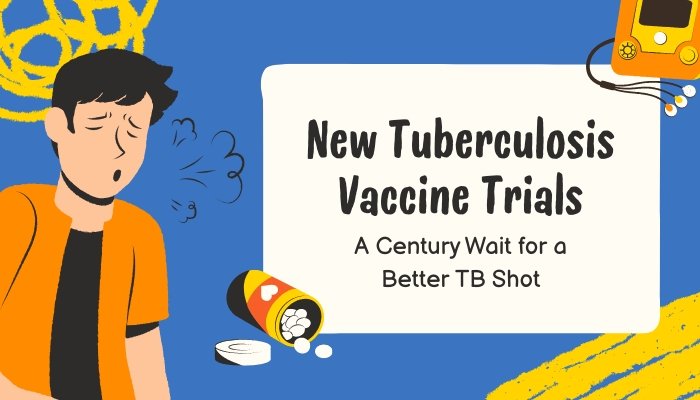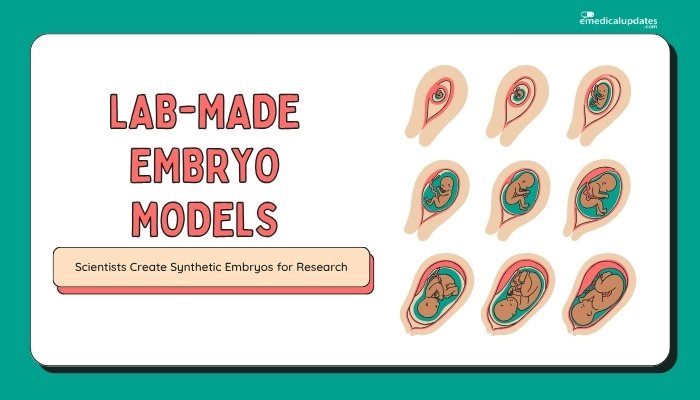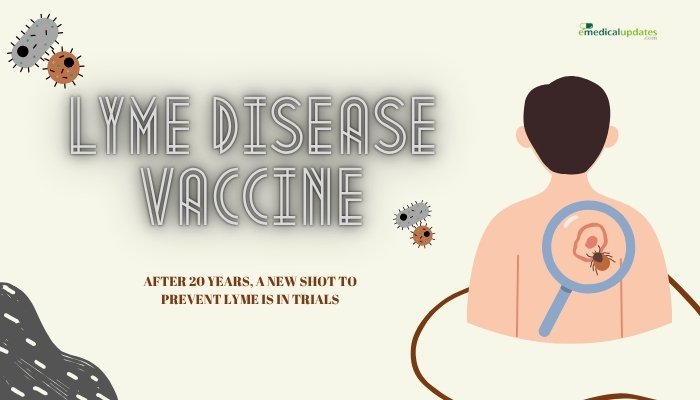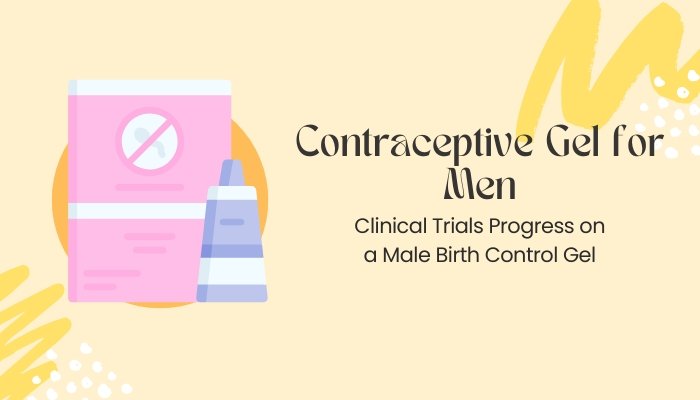Introduction
Tuberculosis (TB) remains one of the oldest yet deadliest infectious diseases, claiming over a million lives each year, especially in low-resource regions.
Although the BCG (Bacillus Calmette–Guérin) vaccine has been around for nearly a century, it shows variable efficacy—particularly in adults—and has not prevented TB’s global burden from persisting. Now, novel vaccine candidates are emerging in clinical trials, offering the most significant hope in decades for more robust, long-lasting TB protection.
This article explores the background of BCG’s limitations, the progress of new TB vaccine candidates, and the impact their success could have on worldwide TB control efforts.
The Current State of TB and BCG
TB’s Ongoing Threat
- High Global Incidence: TB infects millions of new individuals yearly, with multi-drug-resistant TB (MDR-TB) posing a growing challenge.
- Latent TB: A vast portion of the world’s population harbors latent TB, at risk of reactivation if immunity wanes.
BCG Vaccine’s Shortcomings
- Developed in 1921: BCG remains the only licensed TB vaccine—despite being introduced nearly a century ago.
- Variable Efficacy: It provides moderate protection in children against severe forms (like TB meningitis) but is less effective against adult pulmonary TB.
- Regional Differences: Multiple strains of BCG exist, and protection can differ by geography and local TB strains.
Why a New Vaccine Matters
Reducing TB Transmission and Mortality
An effective new vaccine could:
- Prevent Adult Pulmonary TB: The major driver of transmission.
- Complement Treatment Advances: Minimize reliance on lengthy antibiotic regimens that can lead to resistance.
- Boost Pediatric and Latent TB Control: Possibly improving immunity for those already exposed.
Global Goals and Challenges
The WHO’s End TB Strategy aims to drastically cut TB incidence and deaths by 2035. Without stronger vaccines, these targets remain difficult to achieve. Innovative immunization solutions are key to fulfilling these ambitious objectives.
New Vaccine Approaches
Protein Subunit Vaccines
Some developers focus on antigenic proteins of Mycobacterium tuberculosis, like Ag85B or ESAT-6:
- Adjuvanted Subunits: Combine these proteins with immune-stimulating adjuvants to spark potent T-cell responses.
- Ongoing Trials: Phase II or III trials aim to confirm whether these subunit vaccines prevent disease in high-risk adults or adolescents.
Viral Vector Vaccines
Borrowing from other infectious disease breakthroughs, companies engineer harmless viruses (like adenoviruses or MVA) to deliver TB antigens:
- Boosting BCG: Some vector vaccines function as a “booster” after initial BCG, hoping to sustain or enhance immunity into adulthood.
- Potential for Cross-Protection: Some vectors target multiple TB antigens to broaden coverage.
Live Attenuated or Genetically Modified TB Strains
In a more radical approach, scientists are modifying the TB bacterium or related strains for better immunogenicity and safety:
- MTBVAC: A vaccine candidate derived from a genetically modified Mycobacterium tuberculosis strain. Early-phase trials indicate robust T-cell responses.
Clinical Trial Highlights
M72/AS01E Subunit Vaccine
Developed by GSK, M72/AS01E includes antigens Mtb32A and Mtb39A:
- Phase IIb Data: Demonstrated about 50% efficacy in preventing active TB among latently infected adults, sparking optimism.
- Ongoing Trials: Additional studies aim to verify efficacy in broader populations and confirm safety.
TB Candidate from IAVI, Oxford, and Others
Academic and nonprofit groups collaborate on prime-boost regimens:
- New Adjuvants: Use novel immune enhancers to prolong protective T-cell memory.
- Early Results: Show significant immunological markers of protection, though final real-world prevention rates remain under evaluation.
Ongoing Large-Scale Evaluations
Global philanthropic and government agencies sponsor large Phase III trials in TB-endemic regions (sub-Saharan Africa, parts of Asia) to confirm efficacy across diverse epidemiological backgrounds.
Potential Benefits and Challenges
Gains from a Superior Vaccine
- Less TB Transmission: If adult pulmonary TB decreases, overall community spread would drop.
- Reduced Healthcare Strain: Fewer active cases lighten diagnostic and treatment loads, freeing resources for other diseases.
- Reinforcing BCG or Replacing It: A robust new vaccine could boost BCG’s partial protection or eventually supersede it altogether.
Persistent Obstacles
- Funding & Incentives: TB predominantly affects low-income regions, requiring sustained global investment to complete expensive trials.
- Varying Strains: TB diversity across continents means a universal approach must show cross-strain effectiveness.
- Uptake & Distribution: Even after licensing, ensuring widespread administration is complicated by logistical and socio-political factors.
Future Outlook
Improved Combinations
Scientists may combine multiple vaccine modalities (e.g., subunit + viral vector) or use them as boosters after BCG. This strategy aims to harness synergy among different immunogenic components.
Integration with Testing and Treatment
A new vaccine alone won’t end TB. Coupled with better diagnostic tools, effective antibiotic regimens, and public health efforts (like screening and prophylaxis for latent TB), it can profoundly reduce disease burden.
Potential Eradication Goals
While total TB elimination remains challenging, an effective vaccine could push incidence close to zero in many areas—akin to progress seen with polio or measles. International partnerships, such as WHO, Gavi, and national health agencies, remain key in shaping distribution strategies.
Frequently Asked Questions
- Will the new vaccine replace BCG entirely?
- Possibly in the long term. Some approaches might serve as boosters, others as stand-alone. Trial outcomes will guide future recommendations.
- How soon will a new TB vaccine be available?
- Some candidates are in advanced trials; if successful, approvals may occur in the mid-2020s. Widespread rollout typically follows after regulatory endorsements.
- Is one shot enough, or are boosters needed?
- Protocols vary. Some strategies use prime-boost regimens to achieve sustained immunity, while others aim for single-dose efficacy.
- How effective are these new vaccines?
- Early data show anywhere from 30% to 50% efficacy in some studies, but refinement and combination strategies might raise these numbers.
- Will these vaccines work for all ages?
- Trials often focus on adults or adolescents initially, but pediatric testing is planned since children remain a key demographic for TB immunization.
Conclusion
Amid an unacceptably high TB toll, the decades-long reliance on BCG stands poised for an upgrade. New TB vaccines, leveraging subunit designs, viral vectors, and genetically modified strains, offer renewed hope of robust, broad protection. With advanced clinical trials delivering promising efficacy signals, these candidates may soon modernize TB prevention, complementing public health measures to rein in a disease that has plagued humanity for millennia. A successful next-generation vaccine could finally accelerate the path to drastically reduced TB morbidity and mortality—an outcome that would profoundly benefit millions worldwide.
References
-
- WHO (2021). “Global Tuberculosis Report.”
-
- Nguipdop-Djomo P, et al. (2022). “Efficacy of novel TB vaccines: results from Phase II trials.” Lancet Infect Dis.
-
- Tait DR, et al. (2019). “Final results of a trial on M72/AS01E in TB prophylaxis.” NEJM.
-
- Spertini F, et al. (2020). “MTBVAC: a live attenuated Mycobacterium tuberculosis vaccine candidate.” Vaccine.







